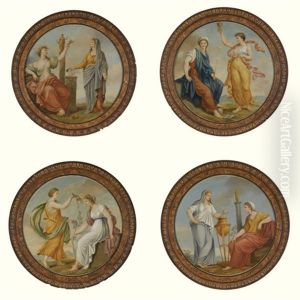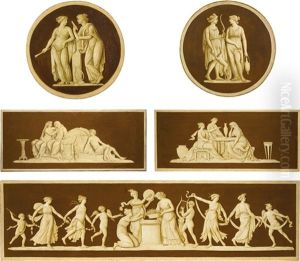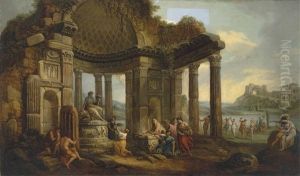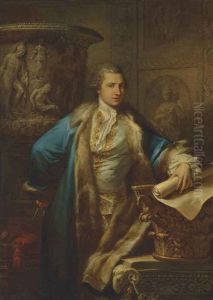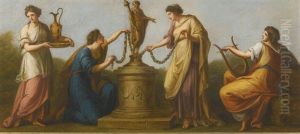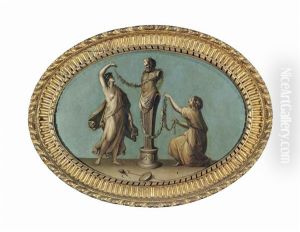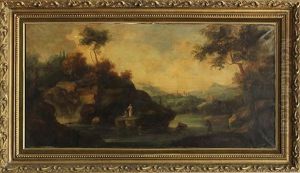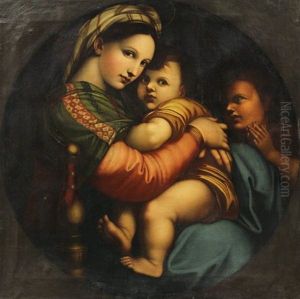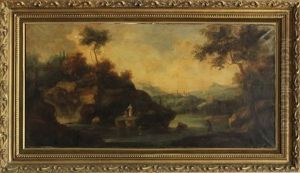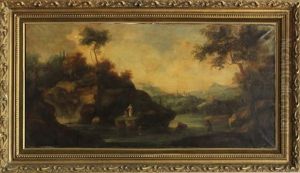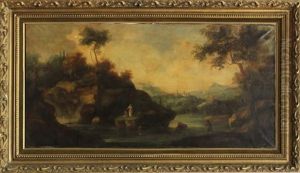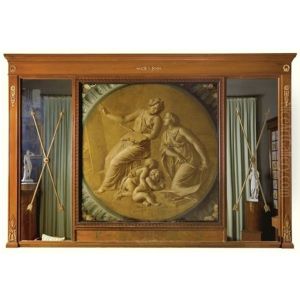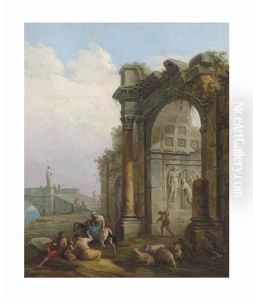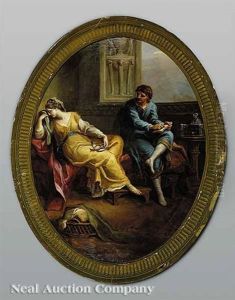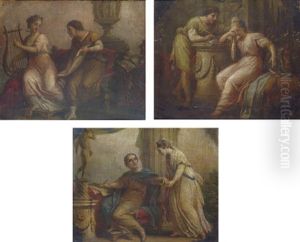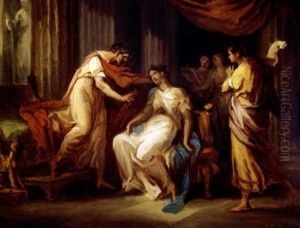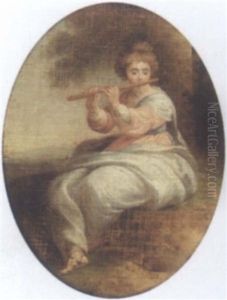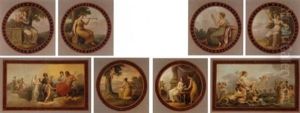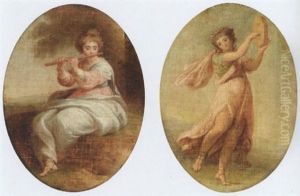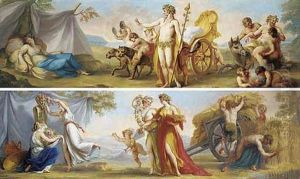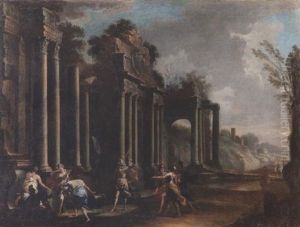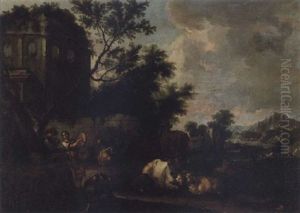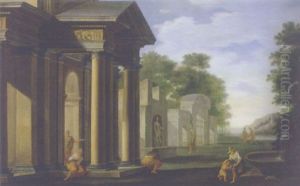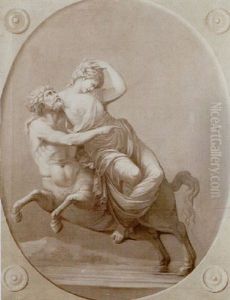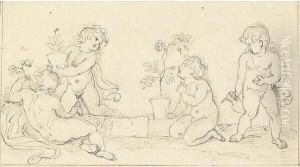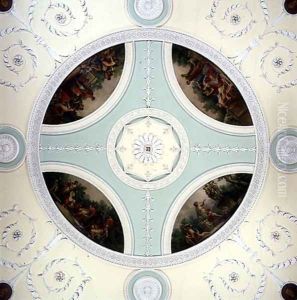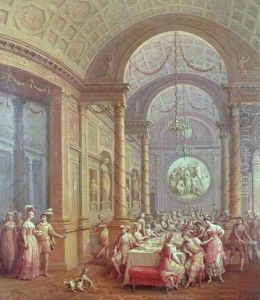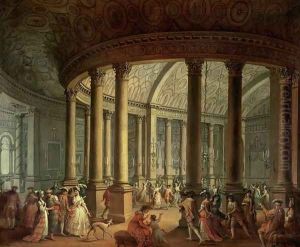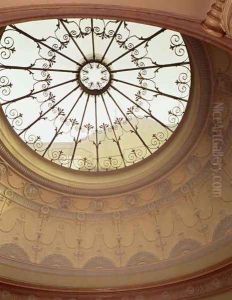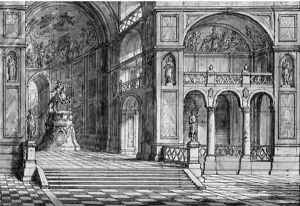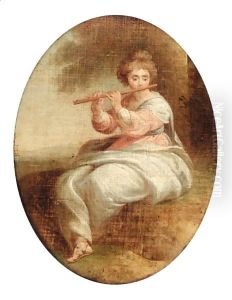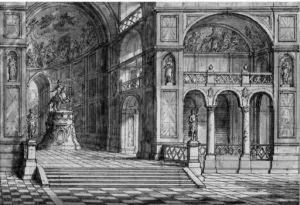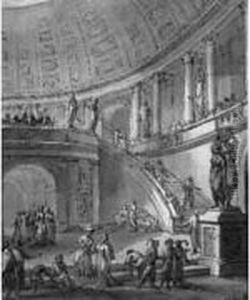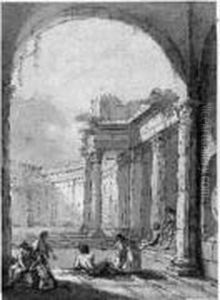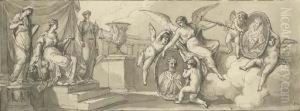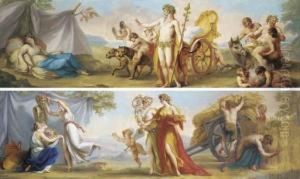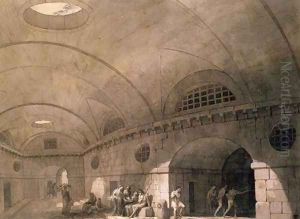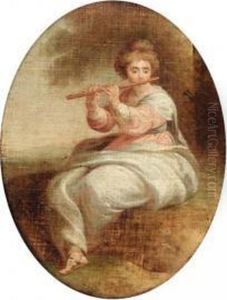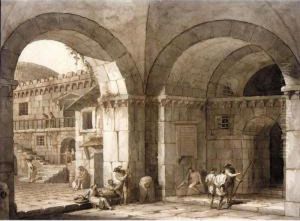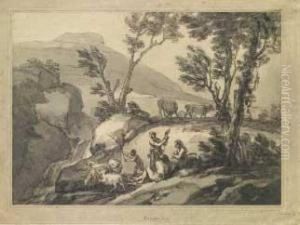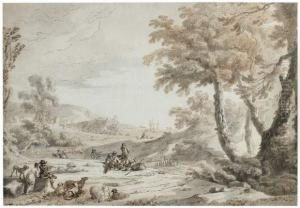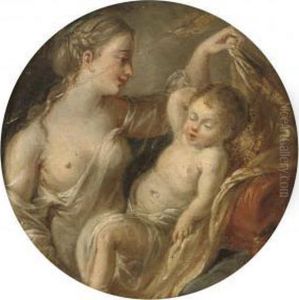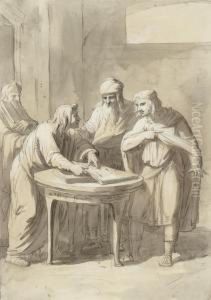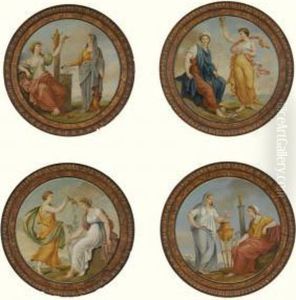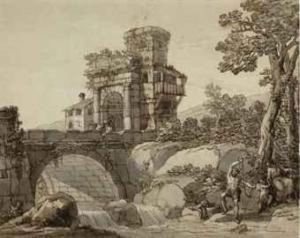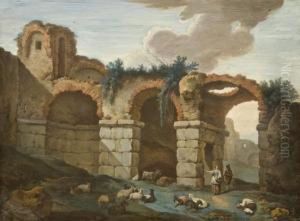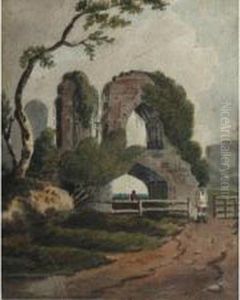Antonio Zucchi Paintings
Antonio Zucchi was an Italian painter and printmaker, born on May 1, 1726, in Venice, Italy. He was known for his neoclassical style, which was a significant departure from the baroque and rococo styles that dominated the art scene during his early years. Zucchi received his initial training from his father, who was a painter of modest reputation, and then went on to study under Francesco Fontebasso, a prominent Venetian artist of the time.
Zucchi's early work consisted of decorative frescoes for Venetian churches and palaces, displaying a mastery of the rococo style. However, he later became influenced by the neoclassical ideals that were spreading throughout Europe in the mid-18th century. This was partly due to his association with the Scottish architect Robert Adam, whom he met in Venice around 1755. Zucchi accompanied Adam on his grand tour of Europe, culminating in a move to London in 1766. Adam's influence was pivotal in Zucchi's shift towards neoclassicism, and the painter became involved in many of Adam's architectural projects.
In London, Zucchi became a sought-after decorative painter, creating ceiling paintings, wall decorations, and allegorical scenes that complemented Adam's neoclassical interiors. His works can be found in many stately homes in England and Scotland, including Osterley Park and Kenwood House. Zucchi's painting style is characterized by elegant figures, classical themes, and a delicate use of color.
In 1781, Antonio Zucchi married the renowned Swiss neoclassical artist Angelica Kauffman, who was a founding member of the Royal Academy of Arts. The couple shared a mutual interest in the neoclassical aesthetic, and their artistic collaboration was well-received. They eventually moved to Rome in 1781, where Zucchi continued to work until his death on December 1, 1795.
Throughout his career, Zucchi was not only a painter but also an accomplished printmaker. He created etchings that reflected his interest in classical antiquity and contributed to the dissemination of neoclassical ideals in art. While not as famous as some of his contemporaries, Zucchi's work played a role in the transition of European art from rococo to neoclassicism, and his collaborations with Robert Adam left a lasting impact on the interiors of the British aristocracy.
